What
We Do
RESCUE
REhab & Release
Rescues can take place all year round, whenever there are bats in the area. However, when a large number congregate during the birthing season (from late September to December), this is when our dedicated volunteer carers are particularly busy attending calls for help from the public and stepping in to foster the orphans through to release.
Every rescue scenario is different, and our carers carry a rescue kit containing various standard items which will enable them to free trapped bats from various situations including barbed wire, fishing line, fruit tree netting. The most common hazards encountered by bats are detailed on this website’s hazards page.
The veterinary surgeons who donate their consultation time to attend to wildlife are an invaluable support to volunteer wildlife carers. Obtaining veterinary advice about flying-fox health and treatments can be difficult as there are few with the relevant experience, knowledge and who are also ABLV (anti-rabies) vaccinated. We are very grateful for the veterinarians who give their time and energy so willingly to assist our carers to rehabilitate sick and injured bats.

Baby Flying-foxes share a close bond with their mothers. They are completely dependent for the first few weeks of their lives, clinging constantly to her for food, warmth and security.
Every night during those early weeks the mother carries her flightless young with her on nightly expeditions to find food. The baby clings to its mother’s warm body with toes gripping her belly and mouth firmly clamped around her underarm nipple during flight. Mishaps and accidents during these expeditions can sometimes result in the baby becoming separated or orphaned.
When the baby is thermoregulating (capable of maintaining its own body heat) and has become too heavy to carry, mother bat will leave her baby at the colony site while she goes out to forage. If a lactating female is found dead or unable to be released due to her injuries, we are faced with the sad fact that any dependent young waiting for her back in the colony will die from starvation.
To make our baby flying-fox orphans feel secure, they are given a dummy with a roll of soft cloth to cling to and then wrapped to simulate mother’s wings. Babies get very attached to their dummy and cry in panic if they drop it. At this age orphans are kept warm and bottle-fed special milk formula 5 times a day.
From the age of 5 weeks, when wild young flying-foxes are too heavy for their mothers to carry while out feeding, our orphans are provided with clothes airers to hang on. At around 10 weeks of age they start to fly —usually annoying everyone in the household! Orphans are fully weaned on to chopped fruit and protein supplement by 12 weeks of age.
From late January our hand-reared orphans between 14-16 weeks of age are gathered into a large creche aviary to socialize, practice their flying skills and begin the process of de-humanizing. After several weeks, they are transferred to a release aviary near a wild colony. The orphans receive support feeding until they eventually join the colony and become independent. The release process takes place during the months of March/April. Orphan season starts again in late September.

RESCUE REHAB & RELEASE
FLYING-FOX ADULTS
The purpose of wildlife caring is to release animals back to the wild. If an animal is unable to survive in the wild due to its injuries or disability, it is unfit for release. Those unable to be released must be euthanased according to the Code of Practice for the Care of Sick, Injured or Orphaned Protected Animals in Queensland, Nature Conservation Act 1992. There are only very few circumstances under which an animal may be kept in permanent care.
The type and extent of the injury or illness determines the length and course of a bat’s rehabilitation. Entanglement injuries (most commonly in tree netting, fishing line and barbed wire) usually affect the wings of bats, however feet and legs can also be badly injured.
The wing membrane has incredible healing capacity and even a fairly large hole will heal well in a relatively short timeframe. However there are times when the membrane is simply too damaged and the tissue ‘dies back’ right to the edge of the wing. Without sufficient surface area, the bat is unable to fly and therefore unreleasable.
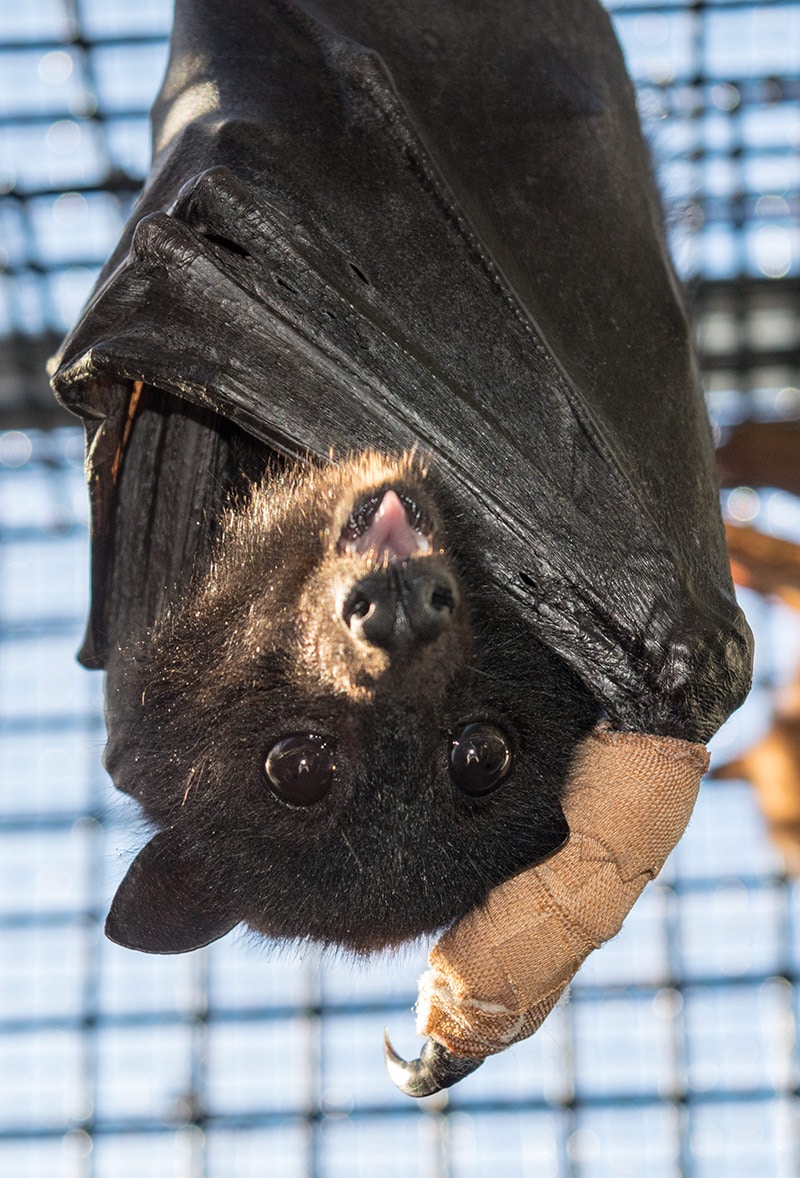
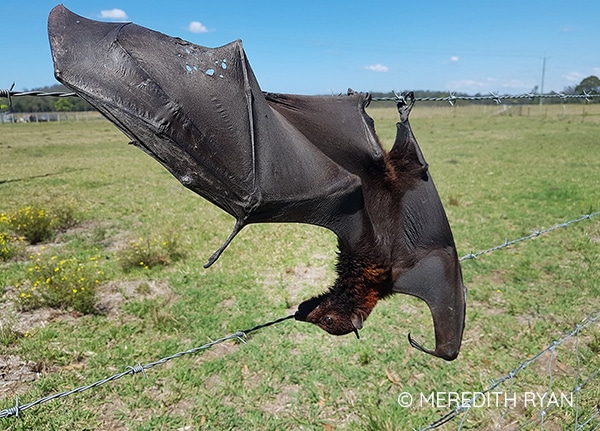

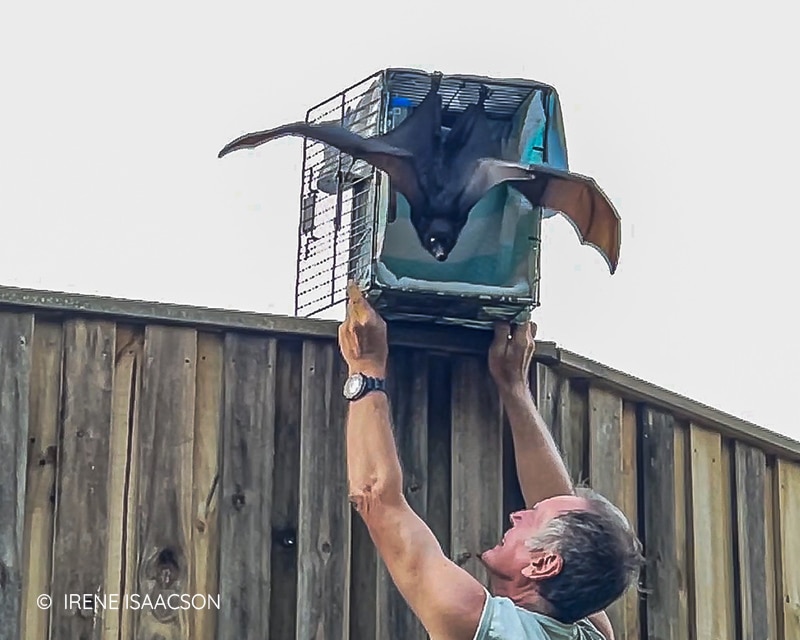
Flying-foxes often fly great distances in search of food. It is therefore vital to ensure that any bat that has spent time in care will not struggle to survive after release. Every rehabilitated bat is assessed carefully to ensure that any injuries or illnesses have been resolved. Various other factors are also taken into consideration including weight, behaviour, condition and flight capability. Release generally takes place at a flying-fox colony closest to where the bat was found.
It is always extremely gratifying being able to release a bat that otherwise would have died had it not spent time in care.
RESCUE REHAB & RELEASE
MICROBAT ORPHANS
Orphans too young to maintain their own body temperature are kept in a pouch on a heatpad or in a Humidicrib. Artificial heating can cause them to dehydrate easily, so subcutaneous fluid may have to be administered regularly.
There are a number of milk formulas and specific recipes available for microbats. They are fed either with a sponge, or a cannula and syringe.
Relocation of house-dwelling bats cannot be conducted until babies are independently flying (around February/March).

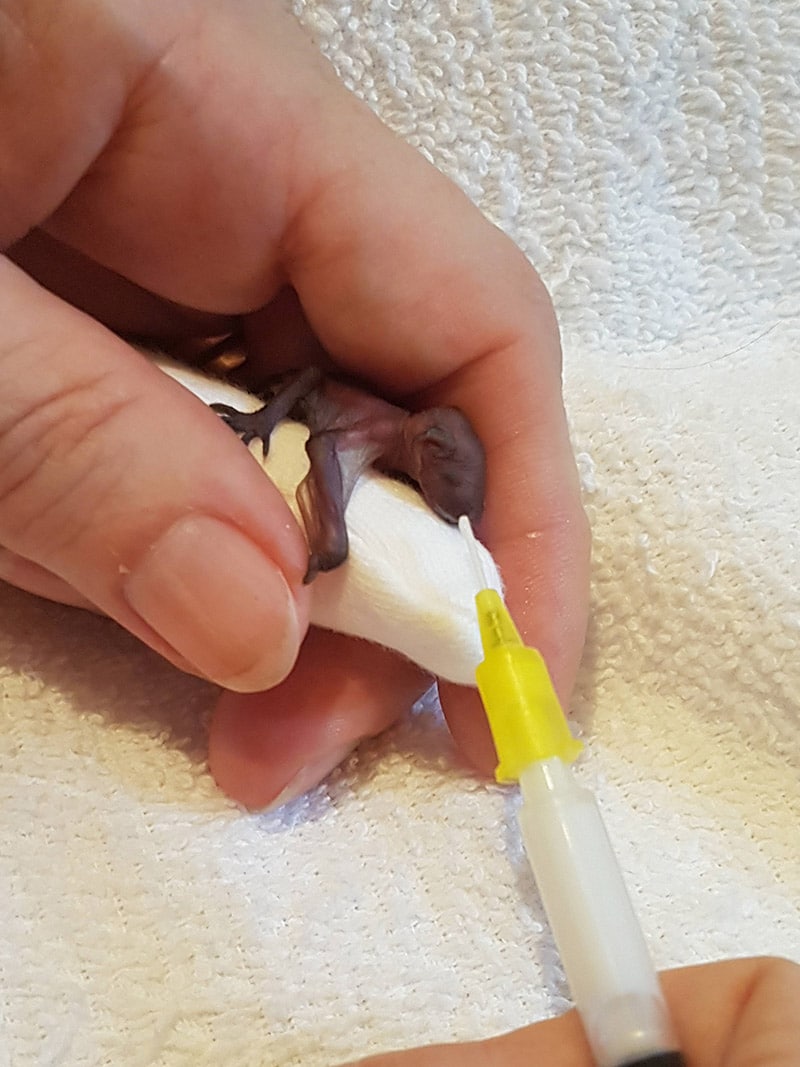
MICROBAT ADULTS
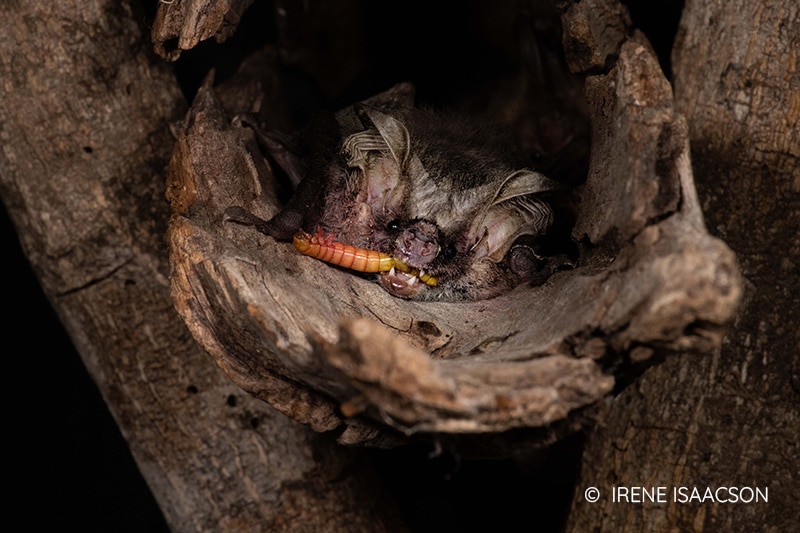
Due mostly to their size, there are far fewer encounters with microbats than the megabats, however there are still significant hazards requiring a rescue. The situations that most often arise with microbats are detailed on this website’s hazards page.
Adult and juvenile microbats which are injured or pregnant are kept in a humidicrib within a small pouch until they are completely stabilized. They are then housed in a mesh terrarium/vivarium or small plastic or glass aquarium with a mesh structure on top and sides to cling to. Some species learn to self-feed quickly but adults can be very difficult. The main captive diets are mealworms with added enrichment, microbat blended food diet and wild caught insects.
After rehabilitation and muscle tone has been built up in a large flight aviary, microbats must be released in the same location they originated.
